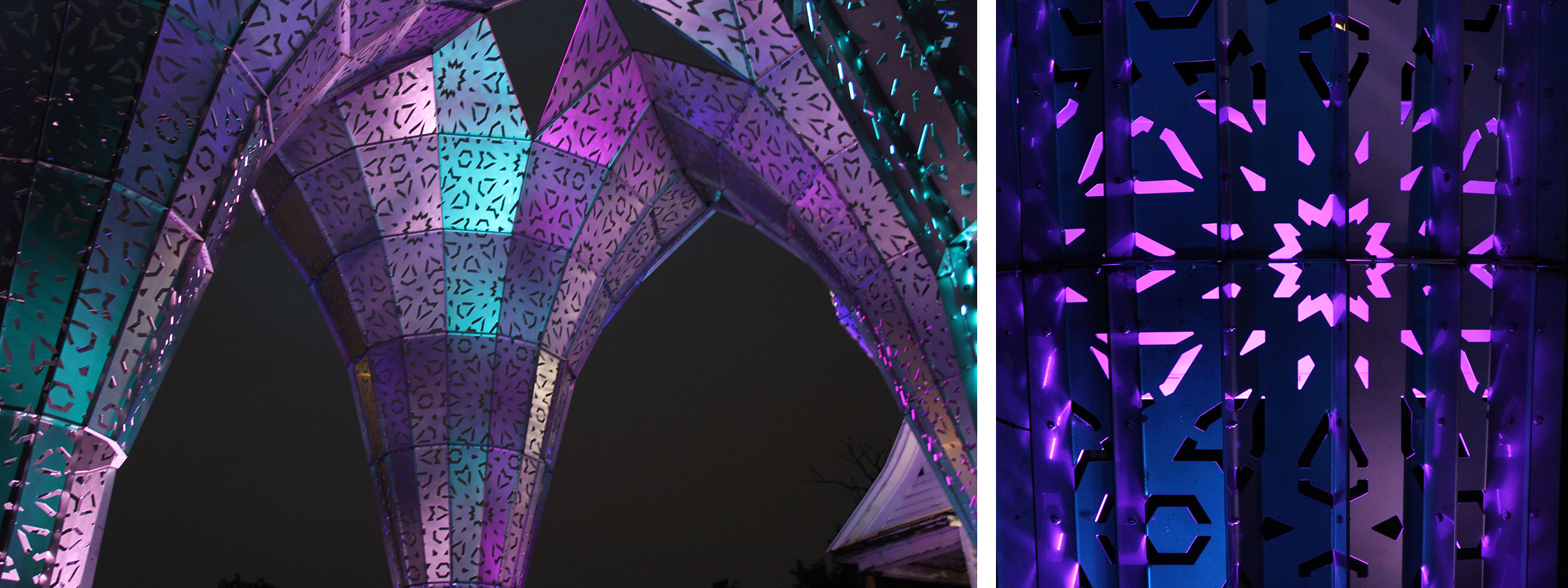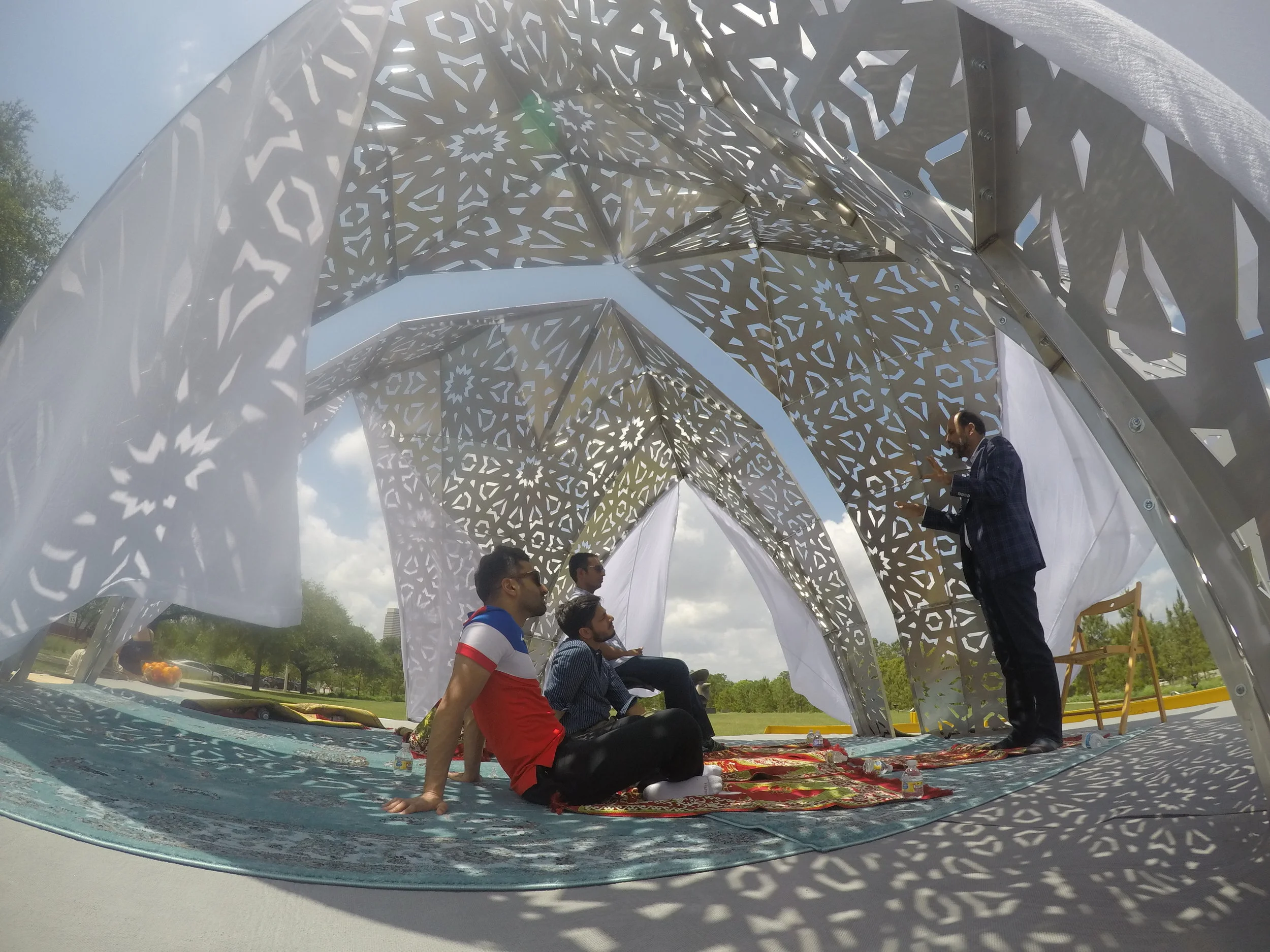An Art and Housing Justice Project in Detroit
"The community land trust model is the antithesis of gentrification. Rather than development happening to a community, the community shapes and drives development.”
- American Riad Partner and Detroit Justice Center attorney Eric Williams
American Riad Launch Party with Oakland Avenue Artist Coalition and Detroit Poetry Society, September 2019.
Ghana ThinkTank, Oakland Avenue Artist Coalition, the North End Woodward Community Organization, Central Detroit Christian CDC, and Affirming Love Ministries Church, have formed a partnership with think tanks in Morocco, Indonesia and Syria to rebuild this corner through arts and culture. The courtyard will be a public space for gatherings, workshops, gardening, performances, and the display of local and international art. As we build it, we will work with our neighbors to offer skillshares in art, home-renovation, and setting up your own systems for water filtration and energy collection.
This art and architecture collaboration will transform abandoned buildings and empty lots into an Islamic Riad: communal housing surrounding an elaborate and beautifully designed courtyard. Rather than demonizing Muslims and immigrants as a threat to American culture and safety, this project instead looks at how we can adopt elements of Islamic and African Culture to solve American problems.
The think tank in Morocco felt that many US problems stem from an Architecture that creates social isolation. They observed that the American dream of the single-family home meant that neighbors are separated from each other. In contrast, they said, Moroccan architecture creates community.
Art and Housing Justice
The project will create 8-10 units of affordable - and beautiful - housing and 6 businesses. By selecting businesses that serve the needs of the North End, and residents interested in preserving the North End’s history as a Black creative corridor, we hope this can be a positive contribution to a growing neighborhood. To prevent gentrification and displacement, Central Detroit Christian CDC will work with North End Woodward Community Organization to develop the surrounding buildings as affordable housing, guaranteed in perpetuity through the legal and financial protections of a community land trust being developed with Detroit Justice Center.
Workshops in woodworking and in DIY water filtration led by the Morocco and Indonesia think tanks at the American Riad, in the North End of Detroit
Members of a think tank in Morocco providing North African solutions to North Americans problems
Small scale manufacturing techniques to rejuvenate housing in the North End
Working on the American Riad with North End neighbors
Assembling the aluminum Riad canopy, Summer 2017
THANKS
This project is a collaboration with Oakland Avenue Artist Coalition, Central Detroit Christian Community Development Corporation (CDC), NEWCO (North End Woodward Central Organization), and Affirming Love Ministries Church, with support from Creative Capital, Knight Foundation, MEDC, Detroit Justice Center, the Center for Engagement at Purchase College, DTE Energy Foundation, NYFA, Black Rock Arts Foundation, and the 200+ individuals who have donated to this project!
This project is a labor of love for so many that it is impossible to thank everyone, but here is a start:
In Detroit, thanks to Jamii Tata, Keviyan Richardson, and Joseph Hurd of OAAC for their persistence in organizing the construction of the riad, volunteers, and the Detroit Summer Youth Employment Program "Grow Detroit's Young Talent". Of course, thanks to Ulysses Newkirk of OAAC and Roger Robinson of NEWCO, whose early support founded the initial energy for this art and housing justice project. Also to Gabby Knox, Detroit Poetry Society, and the King Street community for their positive energy, and Oakland Avenue Urban Farm for their consistent presence. And we could never forget Dave Bogan of Red Jazz Shoe Shine/ Reflections!
From SUNY Purchase College, Thanks to Raphael Zollinger and Kat Ermant for their digital fabrication support, Rachel Owens and Reg Flowers for integrating Theater of the Oppressed techniques into the project, and Provost Barry Pearson and Director Steve Lam for their institutional support.
The American Riad project is a departure from the way Ghana ThinkTank normally works. Rather than be part of a short-term arts exhibition, it is a long term commitment of resources and energy. We are asking ourselves how opportunities garnered elsewhere (exhibits, performances, etc) can support this work in Detroit. To that end, we would like to thank the Center for Engagement at Purchase College SUNY, Williams College Museum of Art and the University of Houston Cynthia Woods Mitchell Center for the Arts and the Association of Performing Arts Presenters Building Bridges: Campus Community Engagement Grants Program, a component of the Doris Duke Charitable Foundation and Doris Duke Foundation for Islamic Art.
























































































